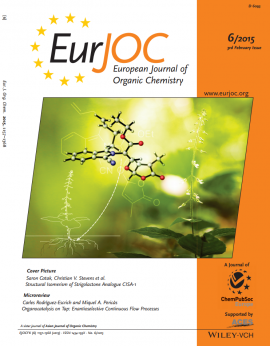Formation of Fluorinated Amido Esters through Unexpected C3-C4 Bond Fission in 4-Trifluoromethyl-3-oxo-β-lactams
Abstract
4-Trifluoromethyl-3-oxo-β-lactams were unexpectedly transformed into 2-[(2,2-difluorovinyl)amino]-2-oxoacetates as major products, accompanied by minor amounts of 2-oxo-2-[(2,2,2-trifluoroethyl)amino]acetates, upon treatment with alkyl halides and triethylamine in DMSO. This peculiar C3-C4 bond fission reactivity was investigated in-depth, from both an experimental and a computational point of view, in order to shed light on the underlying reaction mechanism.

 Open Access version available at
Open Access version available at 